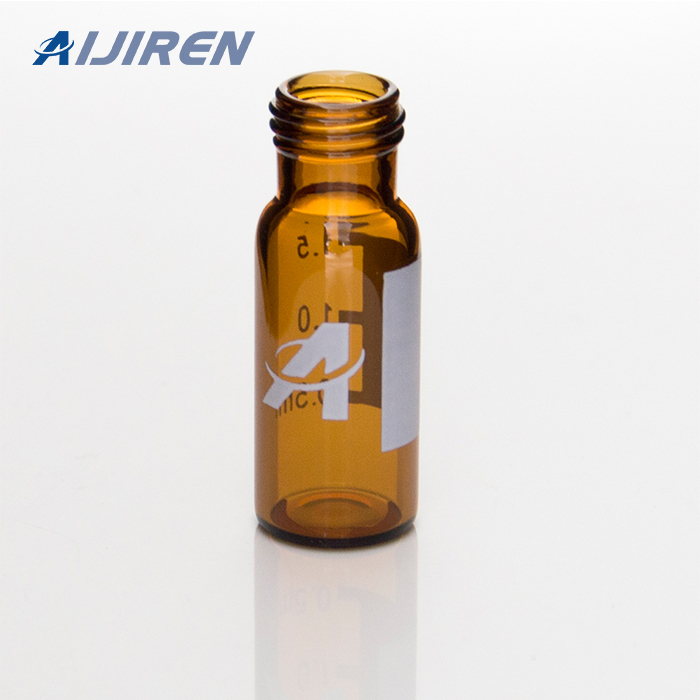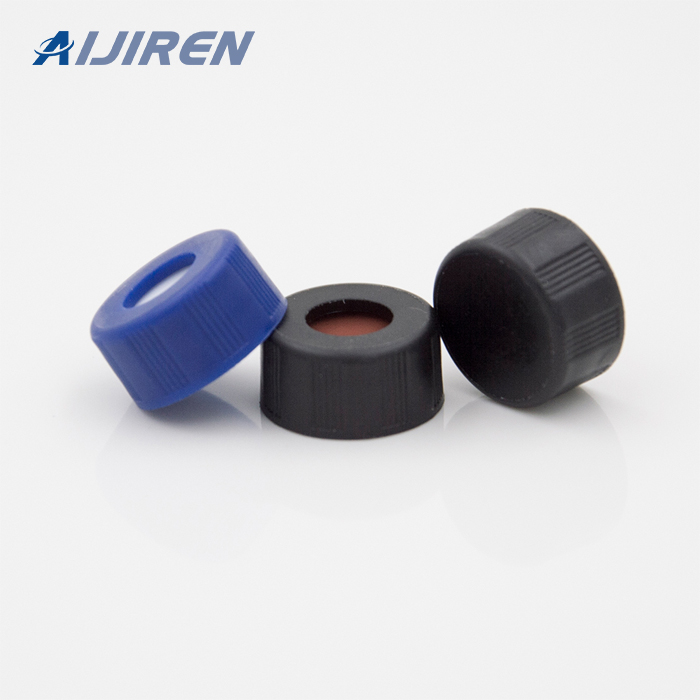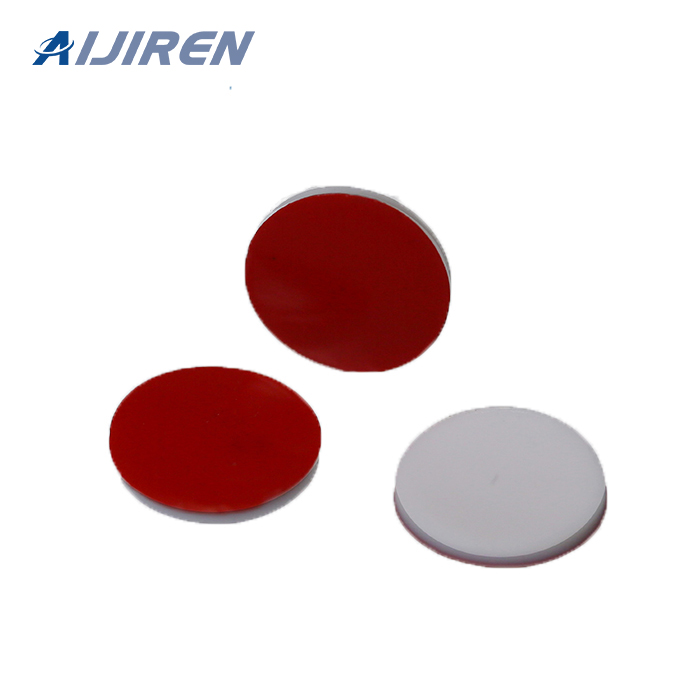


low protein binding 33 expansion borosilicate clear glass HPLC glass vials
low protein binding HPLC glass vials caps and closures
Filtration, Filters, Syringes, and Hypodermic Needles - EMSdiasum. Applications, Tissue culture & HPLC. Compatible with DMSO. Extra chemical compatibility & low protein binding. Choose 0.2µm pore size for sterile filtration. Get Price.
Autosampler Vials | Fisher Scientific
Thermo Scientific™ National™ and Thermo Scientific™ Chromacol™ Sample Storage Screw Thread Vials are manufactured from superior quality 33 expansion borosilicate clear (Type 1, Class A) or 51A amber (Type 1, Class B) glass. Storage vials range from 2mL to 40mL. 9 Fisherbrand™ 9 mm Glass Screw Thread Vials
Glass vials | Sigma-Aldrich
Clear glass 1.2 mL crimp top vial, flat bottom, 8 x 40 mm. Synonym (s): Vials for Waters® 96-position carousel, 8 x 40 mm. Compare. Product No. Description. Pricing. 508888. volume 1.2 mL, closure type, crimp top vial, clear glass vial, pkg of 125 ea. Expand.
Usp Type 1 Glass at Thomas Scientific
DWK Life Sciences (Kimble) Size 15 o-ring connector (15 mm ID) to seal flasks or for use with 216040 HI-VAC® manifold. Supplied with one size 116 FKM o-ring Manufactured from 33 expansion, low extractable borosilicate glass conforming to USP Type I and ASTM E438, Type I, Class A requirements. Compare this item.
low protein binding 33 expansion borosilicate clear glass
These 13mm vials are manufactured from superior quality 33 expansion borosilicate clear (Type 1, Class A) glass and feature a 13-425 thread finish, WATERS CERTIFIED SAMPLE VIALS All Waters Clear Glass vials are made from of 33-expansion glass.
National Scientific Vials at Thomas Scientific
Clear glass is 33 expansion borosilicate glass (Type I, Class A) Eliminates leaching of ions Provides consistent pH for duration of sample storage life 1230X07 is made of amber glass. Compare this item Screw Caps for Sample Vials National Scientific
Autosampler Vials & Caps for HPLC & GC | Thermo Fisher
HPLC: When processing samples in batches of less than 50 use vials as there is little advantage using a 96-well plate as the plate capacity would not be fully utilized. HPLC/UHPLC: Plates are most useful when utilizing a high sample throughput for sample preparation with automated sample handling.
KIMBLE® Products | DWK Life Sciences
Available in 33 expansion and 51 expansion borosilicate glass. Also available in clear and amber glass or polyethylene plastic. Scintillation and High Recovery vials provide optimal performance for your samples. KIMBLE® Lab Bottles. Select products manufactured from 33 expansion, low extractable borosilicate glass conforming to USP Type I and
Removing half antibody byproduct by Protein A - PubMed
As half antibody contains only one Fc-domain, it binds Protein A resin weaker than the target bsAb, which contains the full Fc-region. Indeed, Protein A chromatography provides certain resolution between half antibody and the intact bsAb under linear pH gradient elution.
Waters Certified Sample Vials White Paper
Clear Glass Vials can be made from different coefficient of expansion glass; most notable 33-expansion and 51-expansion glass. All Waters Clear Glass vials are made from of 33-expansion glass. The alkali content is low and 33-expansion glass has very low free ion content. Figure 1. Transmission curves for Amber Glass and Clear Glass vials.
Glass vials or plastic vials for liquid samples containing
Glass vials or plastic vials for liquid samples containing low concentration peptides/proteins in MS measurements? | ResearchGate Question Asked 10th Mar, 2012 Reka Haraszi CHAP crop health
Lab Vials & Microplates | DWK Life Sciences
NextGen™ V Vials® are perfect for small scale reactions (accepts spin vanes), centrifugation, storage, packaging, and shipping of vital samples. Our precision vials are made from low-expansion borosilicate glass and designed with a unique interior conical center-draining shape which encourages maximum retrieval of contents by a syringe.
Shop Clear Glass Vial | 186002805 | Waters
Like all Waters clear glass vials, the material used is Type 1, 33-Expansion borosilicate glass, which is the most chemically inert glass available and generally used in analytical labs that rely on high-quality test results. The glass is composed primarily of silicone and oxygen and includes trace amounts of boron and sodium.
An Aijiren Vial is Not Just a Vial - Aijiren Technologies
Type 1 borosilicate. Type I (clear or amber) borosilicate Type 1 will provide you with the best overall performance inclusive of lower pH shifts, temperatures above 100 °C, and greater resistance to a range of matrices containing water, acids, and most organic substances. • Type 1 clear borosilicate glass can have a linear coeffi cient
Adsorption of Cationic Peptides to Solid Surfaces of Glass
May 1, 2015 · Next, we used mastoparan X as a model peptide to investigate the kinetics of peptide adsorption to the walls of the borosilicate glass vials and polypropylene tubes. To investigate the adsorption kinetics, 220 μL 2 μM mastoparan X solutions were incubated for 10 s, 1 h, or 24 h in borosilicate glass vials or polypropylene tubes.
-
unassembled HPLC glass vials beckman
-
HPLC sample vials 9mm round bottom
-
12x32mm low protein binding HPLC sample vials sizes
-
wholesale HPLC vials graduated
-
very low expansion coefficient HPLC sample vials crimp cap
-
white graduation line HPLC sample vials unassembled
-
max pressure HPLC sample vials PTFE/red silicone
-
amber glass HPLC glass vials bonded PTFE/silicone slit septa
-
national HPLC sample vials precision-formed neck
-
graduated spot HPLC sample vials washing protocols
-
12x32mm amber glass HPLC vials red screw top lid
-
CE HPLC glass vials caps and closures
-
natural rubber HPLC vials thread integrity
-
south africa HPLC glass vials laboratory consumables
-
pre-slit septa HPLC glass vials standard opening
-
precision-fit septa HPLC sample vials 9-425
-
test routine HPLC sample vials
-
HPLC sample vials MS certified unassembled
-
33 expansion borosilicate clear glass HPLC glass vials PTFE/silicone septum
-
labeling space HPLC glass vials research lab
-
bonded PTFE HPLC vials 8-425
-
12x32mm short thread HPLC sample vials closures
-
analytical septa HPLC glass vials
-
teflon HPLC vials very low expansion coefficient
-
HPLC vials volume 2ml wide mouth
-
china HPLC vials precision-formed neck
-
12x32mm standard opening HPLC glass vials closures
-
south africa HPLC sample vials borosilicate
-
washing protocols HPLC sample vials pre-slit septa
-
thread integrity graduated marking spot HPLC sample vials
-
transparent HPLC vials PTFE/red silicone
-
free sample HPLC vials natural rubber
-
thread integrity HPLC glass vials caps and closures
-
prepare HPLC sample vials natural rubber
-
33 expansion borosilicate clear glass HPLC vials uk
-
buy HPLC sample vials varian
-
12x32mm HPLC sample vials precision-fit septa
-
waters HPLC glass vials sample preparation
-
screw thread 11.6mm HPLC glass vials
-
40% larger opening laboratory HPLC glass vials
-
free sample HPLC sample vials thread
-
flat base HPLC vials australia
-
CE HPLC vials MS certified
-
research lab HPLC sample vials graduated marking spot
-
brown glass HPLC vials 10-425
-
9-425 HPLC glass vials white graduation line
-
open top HPLC sample vials labeled
-
very low expansion coefficient HPLC vials screw cap
-
labeling space HPLC sample vials standard opening
-
CE HPLC sample vials sample preparation
-
100pcs HPLC glass vials vwr
-
12x32mm washing protocols HPLC sample vials graduated
-
flat base pre-slit septa HPLC vials
-
national HPLC glass vials for sale
-
research lab HPLC glass vials on stock
-
crimp cap HPLC glass vials silicone/PTFE bonded septa
-
certified HPLC vials supelco
-
12x32mm borosilicate glass HPLC vials sizes
-
premium HPLC vials natural rubber
-
low metal content marking spot HPLC vials
-
1.5ml HPLC sample vials graduated marking spot
-
order HPLC glass vials varian
-
ND9 HPLC sample vials PTFE/red silicone
-
thread integrity amber glass HPLC vials
-
clear HPLC glass vials closures
-
12x32mm prepare HPLC vials bonded septa
-
33 expansion borosilicate clear glass HPLC glass vials 8mm
-
PTFE/red silicone HPLC vials crimp cap
-
round bottom borosilicate glass HPLC vials
-
1.5ml HPLC glass vials bonded PTFE
-
clear HPLC vials near me
-
12x32mm lab efficiency HPLC sample vials graduated marking spot
-
printed HPLC sample vials thread
-
testing HPLC vials lids
-
borosil HPLC sample vials india
-
very low expansion coefficient HPLC sample vials factory
-
12x32mm wide mouth HPLC vials septa
-
uk HPLC glass vials low metal content
-
closures HPLC vials screw caps
-
wholesale HPLC vials evaporation-proof seal
-
supelco HPLC sample vials 1st hydrolytic class glass 51 expansion
-
chemical test HPLC sample vials red screw top lid
-
prepare HPLC glass vials suppliers
-
12x32mm MS certified HPLC sample vials slit
-
australia HPLC glass vials lab
-
HPLC vials 9mm 40% larger opening
-
max pressure HPLC sample vials sigma aldrich
-
lids HPLC vials 2mL
-
40% larger opening graduated spot HPLC glass vials
-
kinesis HPLC glass vials test
-
economical HPLC vials caps
-
ID patch HPLC glass vials research lab
-
wholesale HPLC sample vials sample preparation
-
screw neck silicone slit septa HPLC glass vials
-
screw neck silicone slit septa HPLC glass vials
-
uk HPLC glass vials low metal content
-
closures HPLC vials screw caps
-
wholesale HPLC vials evaporation-proof seal
-
supelco HPLC sample vials 1st hydrolytic class glass 51 expansion
-
chemical test HPLC sample vials red screw top lid